Outdoor Screws Explained: Your Complete Guide
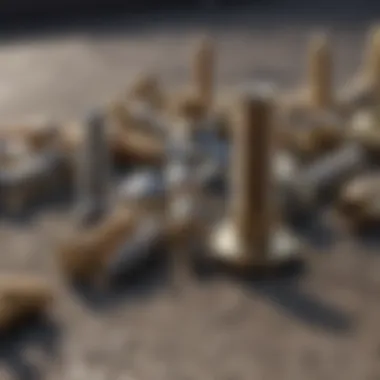
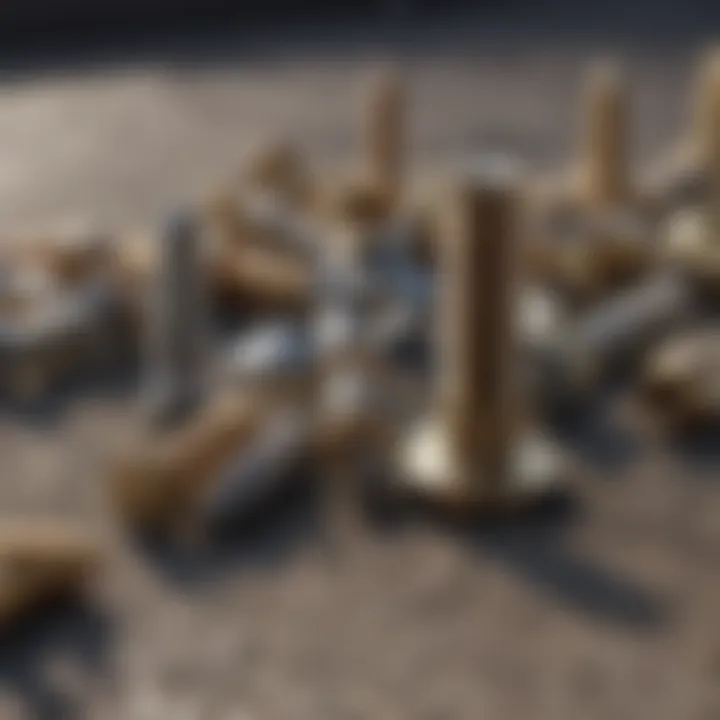
Overview of Topic
Outdoor screws aren’t just little pieces of metal; they’re the unsung heroes holding together the very structures that shelter us. In the home improvement industry, they play a critical role in everything from building decks to putting together garden furniture. These fasteners must stand up to the test of time and nature, as they are constantly exposed to elements such as rain, wind, and varying temperatures.
Understanding the significance of outdoor screws is vital for any homeowner or DIY enthusiast. Inappropriate choices can lead to everything from rusted structures to costly repairs. With advancements in materials and coatings, today’s outdoor screws offer better protection and durability. Knowing which types work best in specific applications can truly be the difference between a long-lasting project and a future headache.
Common Challenges and Solutions
Every homeowner faces challenges when tackling outdoor projects, and choosing the right screws is often one of them. Here are a few common headaches:
- Corrosion: Many screws corrode or rust over time, especially if they’re not made of weather-resistant materials.
- Splitting: When screws are improperly installed or the wrong type is used, wood can easily split, rendering your work vulnerable.
- Shear Failure: This occurs when screws fail under load, which can be frustrating and dangerous.
Solutions and Tips
To help mitigate these issues:
- Choose Quality Materials: Select screws made from stainless steel, coated with materials like galvanization or polymer for extra protection.
- Pre-drill Holes: To prevent splitting, always drill pilot holes before installing screws, especially in hardwoods.
- Follow Load Guidelines: Use screws appropriately rated for the weight they will bear.
"Selecting the right outdoor screw means avoiding headaches down the road. "
Product Recommendations
Navigating the market can be a bit overwhelming when trying to find the right outdoor screws. Here's a look at some top brands that stand out:
- GRK Fasteners
Known for their high-performance self-tapping screws, GRK’s products are often praised for their impressive holding power and resistance to corrosion. - Deckmate
Specifically designed for deck construction, Deckmate screws feature an advanced coating that prevents rust and tarnishing, making them ideal for outdoor use. - Starborn
This brand is noteworthy for their composite deck screws that have a unique design to eliminate splitting in composites and other wood types.
Each of these brands offers specific benefits:
- Durability: Resistant to rust and corrosion, perfect for diverse weather conditions.
- Easy Installation: Many come with features that allow for easier installation, saving you time.
- Variety: Different sizes and styles for all sorts of projects.
Step-by-Step Guides
After getting familiarized with the best practices, it’s essential to understand how to effectively utilize outdoor screws in projects. Here’s a quick guide to follow:
- Select the Right Screw: Based on the project and environmental conditions.
- Pre-drill the Materials: If working with wood, measure and pre-drill to avoid splitting.
- Install with Care: Line the screw up perpendicular to the material and use the appropriate drill or screwdriver.
- Check for Stability: After installation, make sure everything is secure and stable.
Following these steps will help ensure that your outdoor projects not only look good but also stand the test of time.
Selecting outdoor screws might seem minor, but when you understand their significance and make informed choices, your results can be remarkably rewarding.
Prelims to Outdoor Screws
When it comes to building and maintaining structures, especially those exposed to the varying moods of Mother Nature, the choice of materials plays a pivotal role. Outdoor screws offer strength and durability, serving as the unsung heroes of many construction and DIY projects. But what makes these screws different from their indoor counterparts? The answer lies in their design and composition, perfectly tailored to withstand the elements.
Understanding outdoor screws is more than just a technical exercise; it’s about appreciating their significance in ensuring the longevity and safety of our homes and outdoor installations. These screws aren't just metal fasteners; they’re crucial components that can mean the difference between a sturdy build and a precarious collapse. Imagine investing in a beautiful wooden deck only to watch it crumble under a storm's fury due to inadequate fasteners. Hence, knowing how to select the right outdoor screw is fundamentally important.
Understanding Outdoor Fixtures
Outdoor fixtures are as varied as the landscapes they adorn, ranging from wooden decks and fences to metal gates and outdoor furniture. The requirement for screws varies across these applications. For instance, a wooden deck demands screws that can resist rust and corrosion from rain and humidity, while aluminum fixtures require screws designed to bond with metals, preventing galvanic corrosion.
In essence, outdoor fixtures call for screws that are not only robust but also compatible with the materials they're joined with. Therefore, an understanding of the context in which these screws will be used is key. Consider, for instance, a coastal home where salt from the ocean air can wreak havoc on standard screws. The need for specialized fasteners becomes crystal clear when one considers the environmental factors that impact integrity and longevity of constructions.
The Need for Specialized Screws
The usual screws we see in everyday life often fall short when exposed to harsh outdoor conditions. They can corrode quickly, leading to weakened structures and costly repairs. This reality is why specialized outdoor screws have emerged. They’re designed not just for strength, but also for resistance against elements like moisture, UV rays, and even pests.
Using the right type of screw can ensure that your project stands the test of time, ensuring safety and security. For instance, deck screws typically feature a special coating to protect against rust, while lag screws are designed for heavy-duty applications, providing reliable strength when needed.
"Choosing the right outdoor screw is not just a matter of convenience; it is about ensuring safety, longevity, and value in your outdoor spaces."
When selecting screws for outdoor use, it’s also essential to consider the specific materials they will be fastening. Using a wood screw for a metal joint may work but can lead to frustration down the line when materials shift and weaken from exposure to weather. Therefore, investing in specialized screws tailored to your outdoor projects is a wise decision that can save both time and money in the long haul.
Types of Outdoor Screws
Understanding the different types of outdoor screws is like having a well-stocked toolbox; each screw serves a specific purpose, meeting various needs depending on the project. The right choice can make all the difference in maintaining the integrity and longevity of structures exposed to weather and moisture. From decking to furniture, outdoor screws play a vital role in holding everything together. It’s imperative to know the distinct characteristics and benefits of each type to ensure a successful installation that stands the test of time.
Wood Screws
Wood screws cater specifically to fastening wooden components. These screws possess sharp, pointed tips that easily penetrate wood fibers, minimizing splitting. Their design often features coarse threads to enhance grip, ensuring a robust connection. They can come with different head styles, such as flat, pan, or oval, influencing how flush they sit with the surface.
When choosing wood screws, consider:
- Material: Stainless steel or coated options are ideal for outdoor use, as they resist corrosion effectively.
- Screw Length: A longer screw may offer better hold, but make sure it doesn’t poke through the other side of the wood.
- Thread: Coarse threads provide better holding power, especially in softer woods, while fine threads are suitable for hardwoods.
Using wood screws is straightforward. Just pre-drill a hole if you’re working with dense wood to ease the screw in, preventing potential damage. These simple measures ensure a strong and lasting connection.
Deck Screws
Deck screws are specially designed for decking applications, prepared to withstand the challenges of the outdoors. They boast features like self-drilling points and a corrosion-resistant coating. The unique design allows them to effectively fasten deck boards to joists, handling the considerable stress generated by foot traffic and the elements.
Key elements to consider include:
- Material Coatings: Look for screws with epoxy or ceramic coatings for enhanced weather resistance.
- Length and Thickness: Longer screws might be necessary for thicker boards; ensure you also factor in the material of the deck.
- Head Type: A drive type that fits your tools well is crucial; choose from Phillips, square, or star drives based on your preference.
Given their specific use, deck screws are essential for building a sturdy and safe outdoor deck.
Lag Screws
Lag screws, thick and hefty, are the go-to option for hefty structural applications. They are often used to anchor heavy frames or to fasten large wooden pieces against resisting forces. With a hexagonal head that accommodates a wrench, they provide exceptional strength and holding power, vital for applications where regular screws wouldn’t cut it.
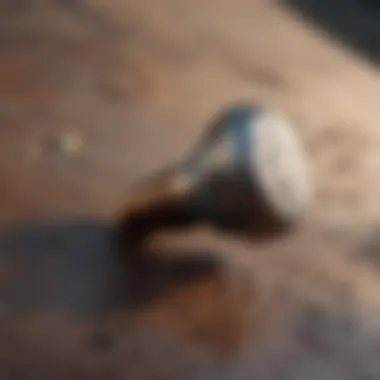
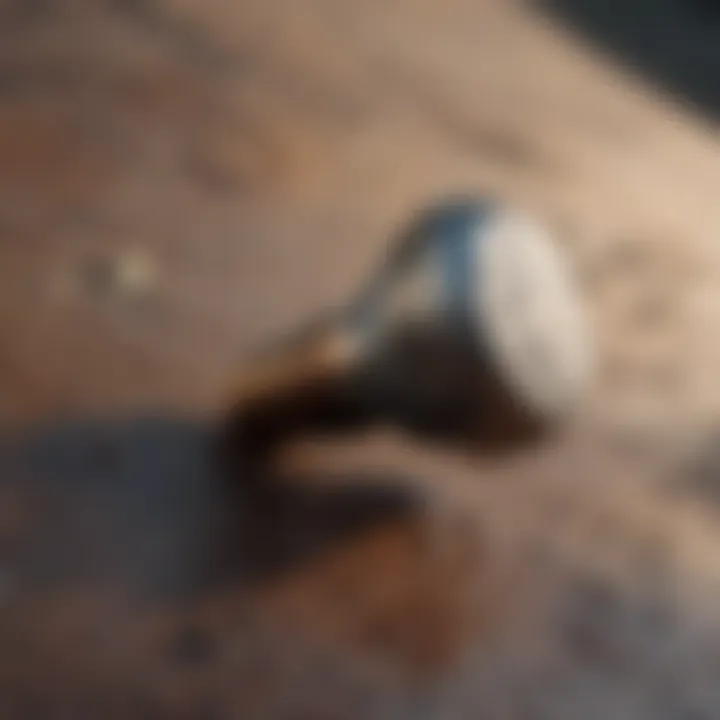
Points to consider when using lag screws:
- Pilot Holes: Always pre-drill to the recommended diameter for the lag screw. This practice helps reduce tension in the wood and eases installation.
- Length: Choose a length that penetrates deeply into the substrate—generally, the length should be at least three times the thickness of the material.
- Material Selection: Opting for stainless steel or galvanized lag screws ensures they won’t deteriorate when faced with outdoor elements.
They work wonders in securing posts, especially when building fences or creating substantial structures.
Sheet Metal Screws
Sheet metal screws are incredibly versatile, capable of fastening metal materials together. These screws have sharp threads that grip materials tightly, making them ideal for applications like metal roofing or working with siding. Their size variability allows for diverse uses in various outdoor settings.
Things to keep in mind with sheet metal screws:
- Thread Design: Self-tapping screws can drill their own holes, offering ease when working with metal. Make sure to select the appropriate thread type for your specific metal thickness.
- Head Style: Choose between pan heads, hex heads, and others based on the aesthetics and functional needs of your project.
- Corrosion Resistance: Just like other outdoor screws, opt for zinc plated or stainless steel variants to protect against rust and deterioration.
In essence, sheet metal screws can be a real boon when handling intricate metal fittings in outdoor conversions.
By understanding these distinct types of outdoor screws, you can approach your projects with confidence, selecting the right tools for your needs and ensuring your constructions hold up beautifully, rain or shine.
Key Materials in Outdoor Screws
When it comes to outdoor screws, the materials they are made from play a crucial role in determining their performance and longevity. Choosing the right material can make all the difference in how well a screw withstands the elements. The choice not only affects durability but also the ease of installation and the overall integrity of the construction. This section discusses the most common materials used in outdoor screws and highlights their specific characteristics, advantages, and any considerations homeowners and DIYers should keep in mind.
Stainless Steel
Stainless steel is perhaps the gold standard for outdoor screws. Known for its resistance to rust and corrosion, stainless steel screws can endure the harshest weather conditions, from blistering heat to freezing temperatures. This makes them a preferred choice for coastal areas where salty air can be particularly damaging.
One of the main benefits of stainless steel is its strength. These screws can handle significant loads, making them great for structural projects such as decks or pergolas. However, it’s important to consider the specific grade of stainless steel. For instance, 304 grade is more susceptible to rust in salty environments than 316 grade, which contains molybdenum for enhanced corrosion resistance. Always be sure to choose the proper grade based on your environmental needs.
"Stainless steel screws aren’t just durable; they can be a cost-effective solution when you factor in their longevity and maintenance-free nature."
Copper
Copper screws are another excellent option for outdoor applications. While they may not be as widely used as stainless steel, their unique properties make them valuable. Copper doesn't just resist corrosion; it actually weathers beautifully over time, developing a distinctive patina. This can be an aesthetic advantage, especially for projects where appearance matters, like garden decorations or architectural features.
Though they are often more expensive than other materials, copper screws can be worth the investment, particularly in decorative elements. However, it’s vital to note that copper screws can react with certain materials, like aluminum and certain treated woods, so care must be taken when mixing materials.
Brass
Brass screws are known for their attractive golden hue and corrosion resistance. They offer good durability and strength but not quite on par with stainless steel or copper. However, brass screws shine in applications where visual appeal is a priority, such as in antique restorations or visible joints on furniture. They resist rust well but can be weaker under stress, making them suitable mainly for lighter loads.
One downside is that brass screws tend to be on the pricier side. It's also good to check for the alloy composition. Some brass screws are made with a zinc component, which can increase brittleness and affect performance, particularly in outdoor conditions.
Carbon Steel
Carbon steel screws, while not the most resistant to corrosion, offer other significant benefits that cannot be overlooked. They are remarkably strong and are ideal for heavier-duty applications. This makes them a reliable choice for projects requiring high tensile strength, such as securing heavy machinery or large outdoor furniture.
To protect against rust, carbon steel screws are often hot-dipped or coated with zinc. However, unlike stainless steel, once the coating is compromised, these screws can easily succumb to the elements. Regular maintenance or painting may be needed to ensure longevity. Homeowners should weigh the importance of strength against the need for corrosion resistance when considering carbon steel screws.
Coatings and Treatments
When it comes to outdoor screws, the discussion often veers away from just the material or design of the screw itself. One crucial aspect that can’t be overlooked is the coating and treatment applied to these screws. These protective layers not only add strength but also enhance longevity, making them ideal for use in environments subject to moisture, corrosion, and other wear factors which can undermine structural integrity. By understanding the various options available in coatings and treatments, homeowners can make informed decisions that ensure their constructions stand the test of time.
Galvanization
Galvanization stands as one of the oldest and most reliable methods of protecting metal from corrosion. In simple terms, it involves coating the screw with a layer of zinc, which acts as a barrier between the metal and the elements. This method is particularly beneficial when working in areas where screws may come into contact with water, such as in decks or outdoor railings.
With galvanization, you get a few noteworthy benefits:
- Corrosion Resistance: The zinc coating effectively prevents rust, ensuring the screws maintain their strength over many years.
- Cost-Effective: Galvanized screws generally come at a lower price point compared to more specialized materials, making them accessible for a variety of projects.
- Easy Installation: Since most galvanized screws are readily available in standard sizes, finding the right fit for your needs is usually straightforward.
However, it's worth mentioning that this coating might not be suitable for all environments, especially those with high acidity or salt levels, as those conditions can still lead to degradation over time.
Zinc Plating
A step beyond galvanization, zinc plating involves a more delicate electroplating process that adheres a thin layer of zinc to the screw surface. It provides similar protective benefits but in a lighter form, often enhancing aesthetic appeal, particularly in visible installations.
Key aspects to consider for zinc-plated screws:
- Moderate Corrosion Resistance: While effective in many situations, these screws might require additional protective coatings or treatments for high-moisture environments.
- Smoother Finish: The plating often yields a shinier appearance, which can complement decorative outdoor fixtures.
- Affordability and Availability: Like galvanization, zinc-plated screws are budget-friendly and widely available in home improvement stores.
While zinc plating works well for many outdoor applications, it's crucial to evaluate your specific setting to ensure it won’t lead to rust or other issues down the line.
Epoxy Coating
If you’re looking for a robust alternative, consider epoxy coating. This method entails covering screws with a thick layer of epoxy resin that provides excellent resistance to both corrosion and wear. The beauty of epoxy is not just in protection; its versatility shows in a range of color options, allowing for more customized projects.
Here are the advantages of opting for epoxy-coated screws:
- Superior Protection: Epoxy holds up against harsh conditions, from moisture to heavy UV exposure, making them a fantastic choice for exposed outdoor applications.
- Non-Corrosive: With very low moisture absorption, these screws resist rust much better than traditional coatings.
- Extended Lifespan: Typically, epoxy-coated screws have a longer operational life than those with other coatings, reducing the need for frequent replacements.
However, installation can require more care, as over-tightening can risk damaging the epoxy layer.
Weather-Resistant Coating
Weather-resistant coatings offer another layer of durability for outdoor screws, with formulations designed to repel moisture, resist salt spray, and withstand ultraviolet light. These coatings serve as a practical all-rounder for various outdoor applications.
Benefits that come with weather-resistant coatings include:
- All-Season Reliability: Screws coated with weather-resistant materials tend to perform well across different climates without compromising integrity.
- Versatile Usage: Whether for fencing, gardening structures, or outdoor furniture, these screws can adapt to a variety of challenges.
- Reduced Maintenance: By combating the main sources of degradation, these coatings can help you minimize upkeep in the long run.
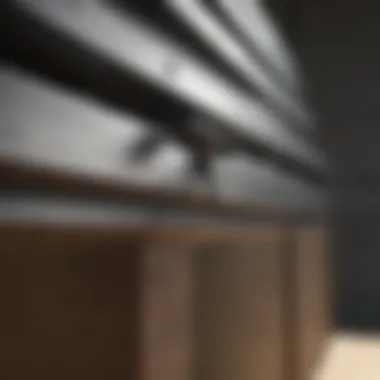
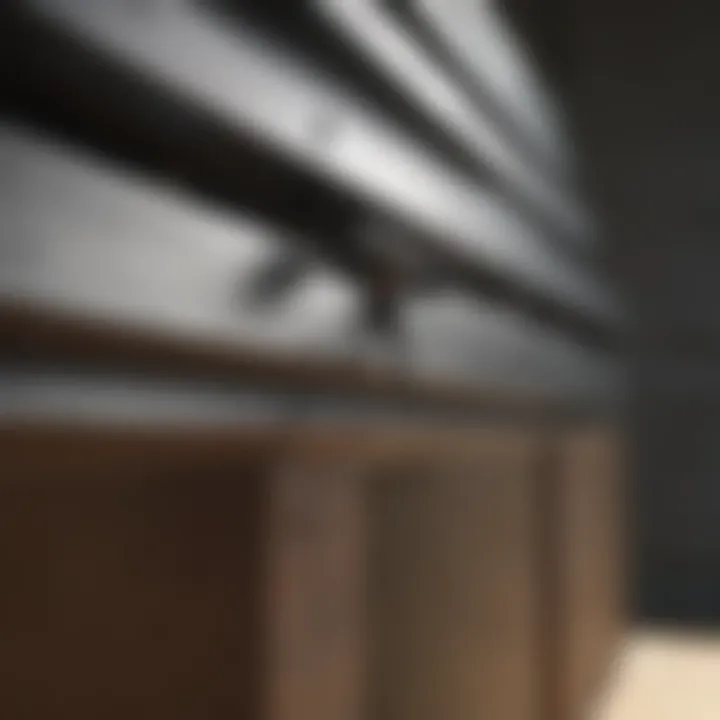
Ultimately, when selecting screws, considering the specific coatings and treatments is like ensuring an umbrella on a rainy day. It might seem minor initially, but ensuring your screws are well-protected is key to a successful project.
Selecting the Right Outdoor Screw
Choosing the appropriate outdoor screw for a specific project can often feel like finding a needle in a haystack. With a multitude of options available, it’s essential to zero in on not just any screw, but the right one. Having a keen understanding of the various elements influencing your choice can lead to a successful installation that stands up against the elements. The right outdoor screw not only ensures a strong hold but also extends the life of your project, making your task easier and more durable in the long run.
Assessing Project Requirements
Before diving headfirst into a selection, it’s crucial to assess your project requirements thoroughly. Ask yourself what exactly you’re building, the materials involved, and if there are any particular needs that might affect your screw choice.
- Material Type: Different materials require different screws. For instance, if you’re working with treated lumber, you’ll want screws specifically designed to be corrosive-resistant to withstand moisture.
- Screw Length: The length of the screw can play a vital role. Ensure it’s long enough to provide a sturdy grip but not so long that it risks poking through the other side.
- Screw Type: Identifying which type of screw—like wood screws or deck screws—suits your project can save you time and hassle.
Taking the time to assess your project ensures that you're not just grabbing screws off the shelf but selecting those tailored to your specific needs.
Environmental Considerations
Outdoor conditions can be quite the wild cards. From humidity to temperature extremes, understanding your environment will guide you in selecting screws that won't falter in the face of nature’s challenges.
- Climate Type: Is it a humid area which could lead to rust? Or is it a dry climate where wood expansion and contraction occur? Choice of screw will depend on these conditions.
- Exposure Levels: Consider how much exposure the screws will have to the elements. For instance, screws used in a covered patio will have different requirements than those in an exposed deck.
- Local Flora and Fauna: Believe it or not, some regions have certain plant oils that can corrode metals. It's worth doing a little homework.
Making environmentally-conscious choices adds an additional layer of durability and allows projects to stand the test of time, rather than succumbing to the elements.
Load-Bearing Needs
When it comes to screws, strength matters. Understanding how much weight your screws need to support is crucial for the integrity of your project.
- Weight of Materials: Heavy materials will demand more robust screws. A wooden pergola, for example, should be anchored with lag screws to ensure stability.
- Usage Frequency: For elements that undergo frequent stress or tension, such as swinging doors or heavy lids, using screws with higher tensile strength will provide added peace of mind.
- Overall Design: The structural design of your project also plays a pivotal role. If the load is distributed unevenly, ensure to reinforce those areas with appropriate screws.
By carefully considering load-bearing needs, you ensure that your outdoor projects are strong enough to withstand everyday use and the occasional storm.
Safety Standards Compliance
Finally, never underestimate the importance of adhering to safety standards when selecting outdoor screws. Compliance isn't just a suggestion; it's a necessity for long-lasting and safe installations.
- Local Codes: Familiarize yourself with local building codes related to outdoor construction. This can guide you in making compliant choices that ensure safety and reliability.
- Quality Standards: Look for screws that have undergone rigorous testing. Consider certifications such as ASTM or ISO, which can be indicators of quality and reliability.
- Manufacturer Guidance: Read product labels for any safety recommendations or specific compliance information. Manufacturers often provide insights on usage scenarios to help you stay above board.
By following safety standards, you not only protect the integrity of your installation but also safeguard both people and property from potential hazards in the future.
Installation Techniques
The process of securing outdoor structures through the right installation techniques can make or break the durability of your project. When it comes to outdoor screws, precision becomes paramount, ensuring that each screw not only embeds properly but also withstands the elements over time. Employing effective installation strategies empowers both professionals and DIY enthusiasts alike to achieve lasting results.
Preparing the Surface
Before diving into fastening, adequate preparation of the surface is critically important. This step may sound simple, but it often gets overlooked, which can lead to problems down the road. A clean surface enhances the screw’s grip and reduces the risk of splitting wood or loosening over time.
Here’s a checklist for your prep work:
- Clear debris: Remove dust, dirt, and old paint.
- Inspect for damage: Check for rot or cracks that might compromise stability.
- Smooth surfaces: Sand rough edges for a better fit.
By making sure your surface is ready to receive the screws, you’re setting the stage for a robust installation, decreasing the chance for repairs in the future.
Using the Right Tools
The right tools are your best allies in achieving a successful installation. Using unsuitable or worn-out tools can result in stripped screws or uneven seating, which compromises the integrity of your project. Tools can vary based on the type of screw and material being used, so it's smart to equip yourself appropriately.
Consider having the following on hand:
- Cordless drill: For quick and easy screw insertion.
- Screwdrivers: A set of types, especially Phillips and flathead.
- Countersink bit: Ensures screws sit flush with the surface, preventing potential snags or injury.
Having the right tools doesn’t just streamline the process; it helps maintain the quality and precision of your work. Remember, a little investment in tools can save you a lot of headaches down the line.
Proper Torque Application
Achieving the right torque when installing screws is vital. Too little torque means the screw might not hold, while too much can lead to damaged materials. Striking that perfect balance requires attention and finesse.
Here are some tips for applying proper torque:
- Use a torque wrench if precision is crucial. This ensures you apply just the right amount without overdoing it.
- Listen to the material: If you hear unusual sounds while driving the screw in, you might be over-tightening. Slow down, and recheck the installation process.
- Practice on scrap materials: Before tackling the real project, practice on some extra pieces to get a feel for the torque needed.
Finding that fine line will make all the difference in your installations.
Avoiding Common Mistakes
Everyone makes mistakes, but some can lead to significant setbacks in your projects. Awareness of frequent pitfalls is your armor against future issues. Here are some of those common missteps:
- Skipping prep work: Jumping straight to screws without preparing the surface.
- Over-tightening: Going too hard can strip the screw or damage the material.
- Wrong screw choice: Using screws unsuitable for the material or environment can lead to failure.
To steer clear of these blunders, always double-check your steps and refer back to research on the specific requirements. Taking that extra moment can save you from hours of rebuilding later.
Remember: Careful installation fosters lasting results, ensuring peace of mind for whatever project you’re tackling.
By focusing on these installation techniques, you are laying down the groundwork for a project that not only stands the test of time but also showcases your dedication to quality and detail.
Troubleshooting Issues with Outdoor Screws
When working with outdoor screws, it’s crucial to realize that they’re not infallible. Even the sturdiest options can encounter difficulties over time, especially when exposed to the elements. Identifying and effectively addressing these issues ensures long-lasting functionality and saves you from potential headaches later on. This section turns the spotlight on common problems associated with outdoor screws, how to recognize them, and practical ways to tackle each challenge.
Corrosion Problems
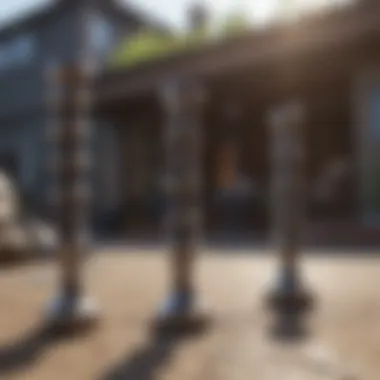
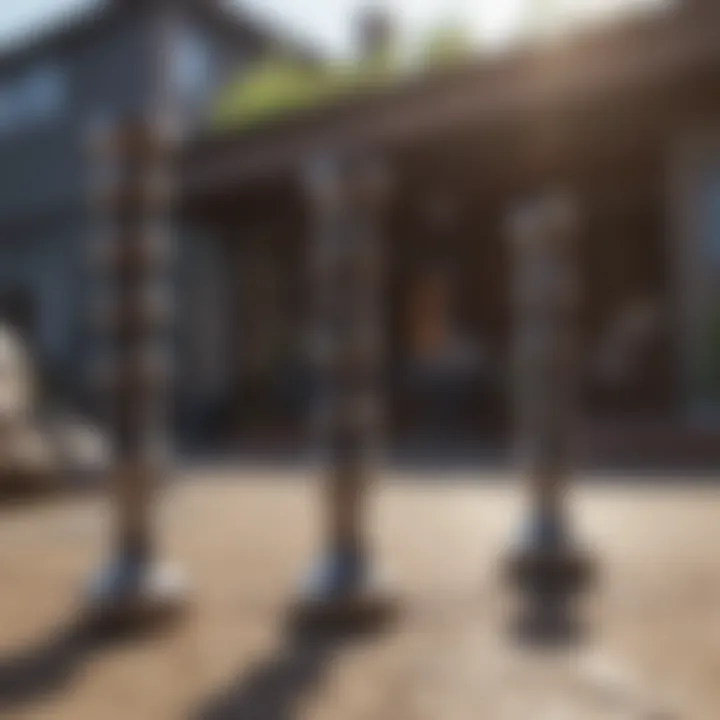
Corrosion is a term that sends chills down the spine of anyone involved in outdoor construction. Outdoor screws endure exposure to moisture, chemicals, and temperature fluctuations which can lead to rust or corrosion. This is particularly true for screws not made of resistant materials. The first step in combating corrosion is to choose the right material, like stainless steel or coated screws that are designed for outdoor use.
When dealing with existing corrosion, it's essential to inspect the screws for signs of rust. If you've got a rusty screw, it may not be effective for holding structures securely anymore.
- Examine the Surface: Check if rust appears as flaky or powdery residue on the screw. If there’s significant damage, you might be looking at a replacement.
- Preventive Measures: To minimize future corrosion risks, always ensure screws are installed in dry conditions, and if possible, choose screws with protective coatings.
"A stitch in time saves nine"; taking these actions now can save time and cost later on.
Loosening Over Time
Over time, screws can become loose due to a variety of factors. The expansion and contraction of wood, changes in temperature, and fatigue can all contribute to this problem. It might start subtly – a squeaky deck board or a loose railing – but if left unaddressed, it can turn into a significant safety concern.
To identify loose screws, periodically check any exposed sections during maintenance rounds. If you notice a screw is loose,
- Tightening Tools: Utilize a power screwdriver to gently tighten the screw back into place. Be careful not to overtighten, as this can sometimes lead to stripping the screw head.
- Reinforce with Wood Glue: For wooden structures, applying a small amount of wood glue before reinserting can help strengthen the hold.
Stripped Screws
Stripped screws can cause frustration that might make anyone want to give up. This scenario usually happens when the screw head has been compromised, rendering it nearly impossible to remove or tighten. Stripped screws often arise from over-torquing or using the wrong screwdriver bits.
Here’s how to handle them:
- Rubber Band Trick: Place a rubber band over the stripped head and try to turn it with a screwdriver. The rubber can provide extra traction.
- Use a Screw Extractor: If the above doesn’t work, a screw extractor kit can save the day. These tools are specifically designed to grip stripped screws and can help in removing them.
- Replacement: When all else fails, drill out the stripped screw, but make sure to choose a slightly larger screw when replacing it to ensure a firm fit.
In summary, knowing how to troubleshoot outdoor screw issues is essential for maintaining structural integrity in outdoor projects. Through regular inspections and simple fixes, you can ensure your investment lasts even amidst the challenges that nature throws its way.
Comparing Top Brands
When it comes to outdoor screws, the choices in the market can be daunting. This section emphasizes the significance of comparing top brands to guide housewives and homeowners in making informed decisions. Understanding the nuances between brands can lead to selecting screws that not only leave a mark but also stand resilient against time and natural elements.
Different brands offer varying qualities, materials, and warranty claims. Often, the less known brands might surprise you with better performance, albeit they might not have the same marketing push as their bigger counterparts. Still, some premium options justify their price tag with durability and reliability. Being able to sift through these options helps ensure that you invest your hard-earned money wisely.
Brand A Overview
Brand A is known for its robust lineup of outdoor screws designed specifically for heavy-duty applications. This brand often comes up in conversations among professionals due to its emphasis on quality and high tensile strength. The screws are crafted from stainless steel, which enhances their resistance to rust.
"You can't skimp on the screws, or you might regret it down the line." - DIY Enthusiast
Some notable features of Brand A include:
- Corrosion Resistance: Offers a protective layer that shields against moisture.
- Variety of Sizes: Suitable for different project requirements, from small repairs to large constructions.
- Ease of Installation: Designed with sharp tips for smooth driving into the material.
Brand B Evaluation
Brand B caters to a more budget-conscious demographic but doesn't compromise entirely on quality. They provide a versatile range of screws, making them a fantastic option for everyday projects around the home. Their marketing often highlights user testimonials from housewives who appreciate reliable performance without breaking the bank.
Key elements to consider include:
- Affordability: Competitively priced, making them accessible for DIY projects.
- Availability: Widely available in local hardware stores, ensuring that you have easy access.
- Durability Concerns: While okay for minor tasks, they may not perform as well in heavy-duty applications compared to some higher-priced options.
Brand Features
If innovation and cutting-edge technology are what you seek, Brand C will likely catch your interest. They have made waves with their unique screws that claim to offer better performance due to their innovative designs.
Some of Brand C's standout features include:
- Self-Drilling Points: Reduces the need for pre-drilling, saving time and effort.
- Weather-Resistant Coating: Ensures long-lasting performance even in challenging environments, perfect for outdoor projects.
- User-Friendly Packaging: Provides everything needed for use in one container, minimizing hassle during your home projects.
Brand Pros and Cons
Brand D is often seen as a premium player in the market, thus comes with its own merits and drawbacks.
Pros:
- High-quality materials that withstand intense exposure to the elements.
- Offer comprehensive warranties, providing confidence in durability.
- Environmentally friendly sourcing of raw materials._
Cons:
- Generally on the pricier side, which might not appeal to every customer.
- Limited selection in some regions, making availability an issue for some.
Making choices can be difficult, but understanding the strengths and pitfalls of each brand coupld with your specific needs can lead to gaining quality results in your home improvement projects.
Let's keep all these points in mind as we step into the next journey towards enhancing our spaces!
Epilogue and Final Thoughts
In this discussion about outdoor screws, we have gathered all the essential elements that house owners and DIY enthusiasts need to understand. Concluding with an overview not only ties all the loose ends together but also reinforces the significance of using the right type of screw for your specific outdoor projects. Considering the general challenges like moisture, temperature fluctuations, and the weight they need to bear, outdoor screws are not just fasteners; they are pivotal in maintaining the integrity and longevity of various structures around your home.
Summing Up Key Points
Let’s revisit some crucial points:
- Types of Screws: Every outdoor application requires a specific type of screw—be it wood screws for decking or lag screws for securing heavy posts. Each type has distinct characteristics tailored for different needs.
- Material Matters: The material influences durability. Stainless steel fights corrosion admirably, while copper adds aesthetics but may not be as strong in some situations.
- Coating and Treatment: Coatings such as galvanization or epoxy add a layer of protection against environmental conditions, ensuring your screws withstand time.
- Installation Techniques: Knowing how to properly install a screw guarantees that it'll hold tight over the long haul, reducing the chance of early failure.
- Troubleshooting Common Issues: Understanding signs like corrosion or loosening screws can help you address problems before they escalate into serious issues.
These key pointers guide you in making informed decisions about your outdoor fastening projects.
Encouragement for Informed Choices
When it comes to selecting outdoor screws, it's easy to feel overwhelmed with choices abound. But fret not! By focusing on the previously discussed aspects—type, material, coating, and usage—you can confidently approach any project. Those who know their screws will find themselves enjoying successful results without the fear of rot or rust.
As you contemplate your next outdoor venture, remember this advice:
- Research and consider the environment where your project will live. The right screw will depend on exposure to the elements.
- Don’t forget about load-bearing needs; a robust build sometimes requires heavier-duty screws.
- Safety is paramount, ensuring compliance with any relevant building standards.
In short, homeowners need not be intimidated. With the right information, you can make savvy decisions that enhance both the appeal and safety of your outdoor spaces. As the saying goes, "An ounce of prevention is worth a pound of cure." Take the time to choose wisely, install correctly, and ultimately enjoy the fruits of your labor.







